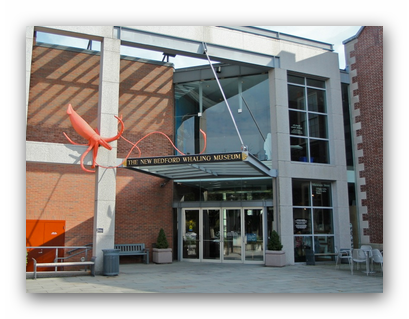Oct 21 2016 - Sep 2017
New Bedford, MA
Famine, Friends & Fenians explores New Bedford’s curious role in Irish history from the 18th century through the famous “Easter Rising” in 1916. This is a story that can only be told in New Bedford. It weaves through three centuries of struggle both in the US and in Ireland, starting as early as 1776 and running up to the Easter Rising in Ireland in 1916. The exhibition looks at New Bedford’s extraordinary charitable role during the Irish famine, and how that Quaker community supported efforts to relieve the plight of starving peasants in Ireland.
It continues through Frederick Douglass when he left the US and went to Ireland for fear of being captured and returned to the south as an escaped slave. He met Daniel O’Connell, Ireland’s “Great Liberator” who through political means wrangled political freedoms for Catholics. During the US Civil War, Irishmen like General Thomas Meagher, commander of the famous 69th Battalion, won fame on the battlefield. Meagher is recognized for unfurling the Irish tricolor for the first time in 1848.
At sea, Confederate raiders targeted New Bedford whalers. Following the war, reparations were sought from Great Britain for outfitting these raiders. The law offices of Crapo, Gifford and Gifford argued this case along with Senator Sumner of Massachusetts. He argued for a hefty sum in compensation and added that Canada should be thrown in as a down payment. Militant Irish-Americans, battle-tested in the Civil War, heard this demand and yearned to strike a blow at the Crown. They invaded Canada twice in 1866 and 1870. While both attacks failed, these attacks acted as a spur for the confederation of Canada.
Meanwhile, in Ireland, militants schemed to throw off the shackles of British rule. As often was the case, these treasonous acts were uncovered and the ringleaders either executed or sent to jail with harsh prison terms. John Boyle O’Reilly and other militants were sent to Australia, sentenced to life imprisonment with hard labor. He escaped with the aid of Captain Gifford and Henry Hathaway aboard the New Bedford whaler GAZELLE. What happened soon after is perhaps the greatest prison break story of the 19th century. O’Reilly, along with other Irish Americans devised a daring plan to outfit another whaler, the CATALPA, and under that ruse of whaling off Fremantle, Australia sprang six prisoners from under the noses of the authorities. The daring rescue is described in detail in the exhibition. The captain of the CATALPA was Captain George Anthony, a New Bedford Quaker by birth with no Irish ancestry. When threatened by cannon, he proclaimed “if you fire on this ship, you fire on the American flag.” He came home as the conquering hero and his actions were so highly regarded that in 1920, Eamon DeValera, the President of Ireland visited New Bedford expressly to lay a wreath on Anthony’s grave.
Credit: Exhibition overview from museum website.
Exhibition Venues & Dates
Oct 21 2016 - Sep 2017
New Bedford, MA
